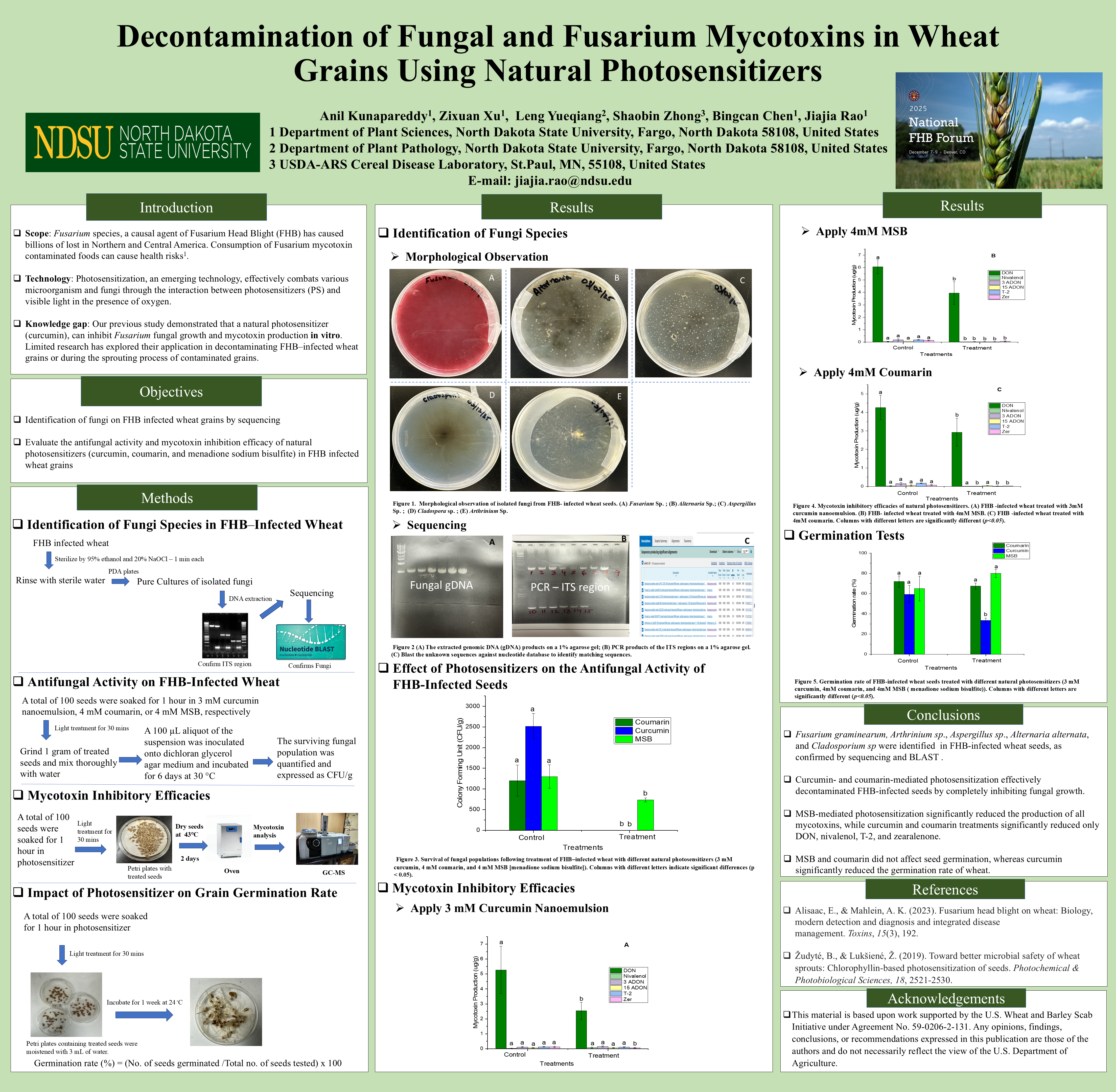Authors: Anil Kunapareddy1, Zixuan Xu1, Leng Yueqiang2, Shaobin Zhong3, Bingcan Chen1, Jiajia Rao1
1. Department of Plant Sciences, North Dakota State University, Fargo, North Dakota 58108, United States
2. Department of Plant Pathology, North Dakota State University, Fargo, North Dakota 58108, United States
3. USDA-ARS Cereal Disease Laboratory, St. Paul, MN, 55108, United States
Corresponding Author: Jiajia Rao, jiajia.rao@ndsu.edu
Presenting Author: Anil Kunapareddy
Abstract
In recent years, sprouted seeds have attracted
increasing global attention owing to their superior nutritional value. For
instance, sprouted wheat flour exhibits greater contents of fiber, as well as
certain vitamins and minerals, compared to all-purpose flour. Meanwhile, sprouts are
considered one of the most contamination-prone fresh produce items and have
been recognized as a major source of foodborne pathogen outbreaks, thereby
presenting a serious food safety issue. Photosensitization is a promising
eco-friendly method to control microorganisms in cereal grains. Our previous study
demonstrated that curcumin, as a natural photosensitizer, can inhibit Fusarium fungal growth and mycotoxin
production in vitro. Therefore, this study
aimed to evaluate the effectiveness of several natural photosensitizers (PSs)
for decontaminating Fusarium head blight (FHB) infected wheat grains and
sprouted wheat grains including curcumin, coumarin, and menadione sodium
bisulfite (MSB). Initially, the specific fungal species contaminating FHB infected
wheat were identified through sequencing and subsequently confirmed by
comparing the sequences against the NCBI nucleotide database using Basic Local
Alignment Search Tool (BLAST). The results showed that the fungi present on FHB
infected wheat included Arthrinium sp.,
Aspergillus sp., Fusarium graminearum, Alternaria
alternata, and Cladosporium sp. Afterwards,
the three aforementioned natural PSs were evaluated for their ability to
decontaminate wheat seed surfaces by counting surviving fungal colonies on 100
FHB infected wheat seeds. The antifungal results indicated that curcumin and
coumarin, combined with light treatment, completely inhibited fungal colony
growth at concentrations of 3 mM and 4 mM, respectively. In contrast, 4 mM of MSB
significantly inhibited fungal growth as compared to control, but less
effective than that of curcumin and coumarin. In terms of mycotoxin suppression
in wheat seeds and sprouted wheat seeds, all three natural photosensitizers (p
< 0.05) significantly reduced overall mycotoxin production. Among them, MSB
effectively reduced all tested mycotoxins (DON, 3-ADON, 15-ADON, Nivalenol,
T-2, and Zearalenone), while curcumin and coumarin only significantly reduced
DON, Nivalenol, T-2, and Zearalenone. Additionally, the effects of the three
photosensitizers on seed germination rate were evaluated. The results indicated
that coumarin and MSB did not affect germination rate, whereas curcumin
significantly reduced the germination rate of wheat seeds as compared with
control sample. In conclusion, MSB based photosensitization treatment shows
great potential for controlling fungal contamination and mycotoxin production
in highly contaminated wheat seeds and germinated wheat sprouts.

